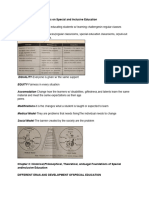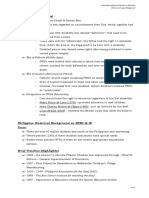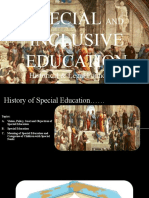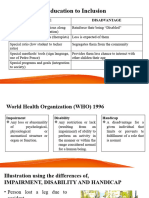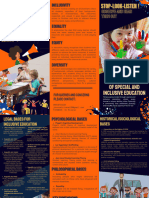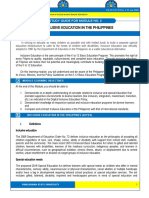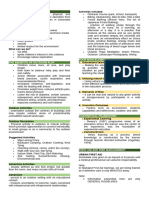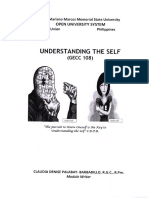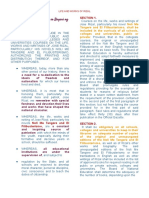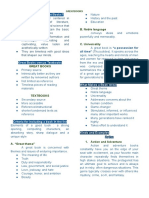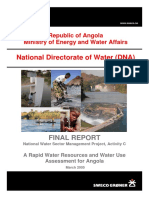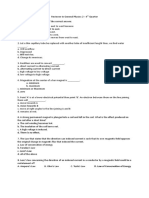0% found this document useful (0 votes)
71 views4 pagesInclusive Education Essentials
This document discusses the foundations of special and inclusive education. It defines key terms like special, inclusive, and foundations. It outlines 3 concepts of inclusivity - inclusion, mainstreaming, and integration - and how they differ in terms of learner placement, interaction, and instruction. The document also discusses the historical development of special and inclusive education from eras of extermination and ridicule to early beginnings that advocated for the right to education. Overall, it provides an overview of the concepts, settings, and historical foundations of special and inclusive education.
Uploaded by
HannahCopyright
© © All Rights Reserved
We take content rights seriously. If you suspect this is your content, claim it here.
Available Formats
Download as PDF, TXT or read online on Scribd
0% found this document useful (0 votes)
71 views4 pagesInclusive Education Essentials
This document discusses the foundations of special and inclusive education. It defines key terms like special, inclusive, and foundations. It outlines 3 concepts of inclusivity - inclusion, mainstreaming, and integration - and how they differ in terms of learner placement, interaction, and instruction. The document also discusses the historical development of special and inclusive education from eras of extermination and ridicule to early beginnings that advocated for the right to education. Overall, it provides an overview of the concepts, settings, and historical foundations of special and inclusive education.
Uploaded by
HannahCopyright
© © All Rights Reserved
We take content rights seriously. If you suspect this is your content, claim it here.
Available Formats
Download as PDF, TXT or read online on Scribd
/ 4







